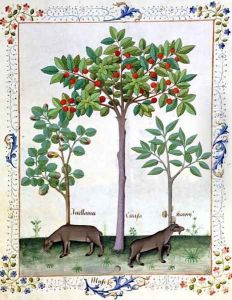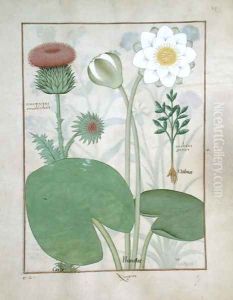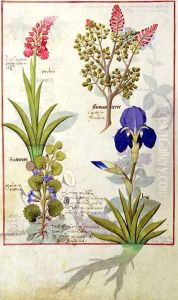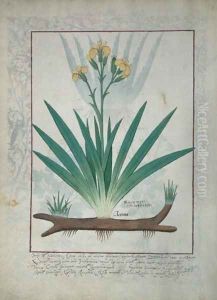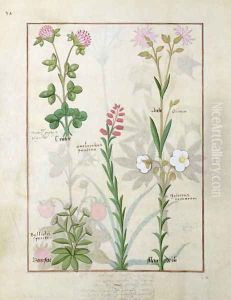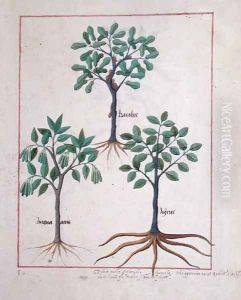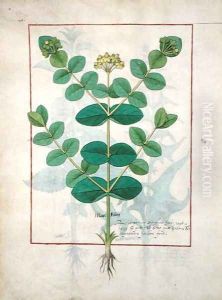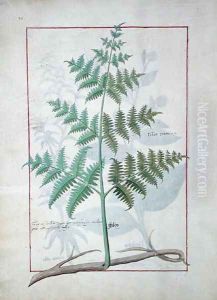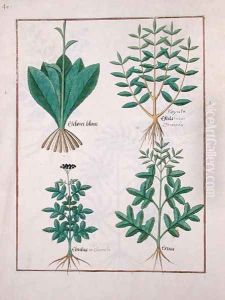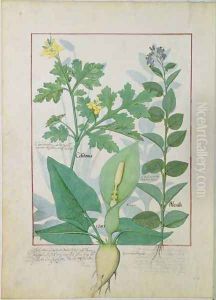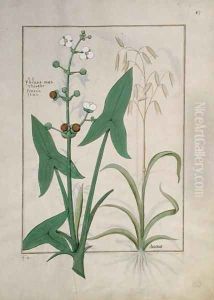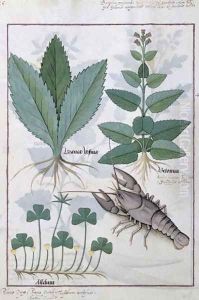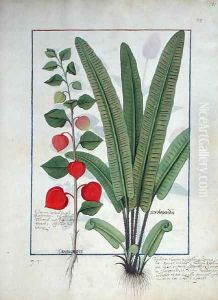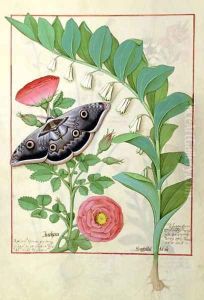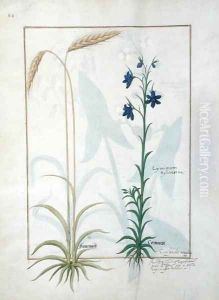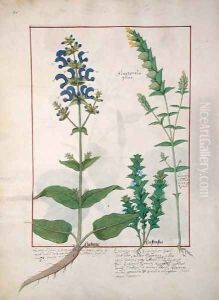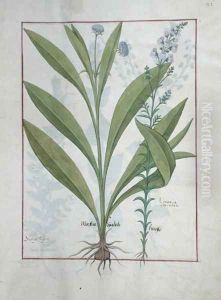





Devils-bit scabious and Toadflax, illustration from The Book of Simple Medicines, by Mattheaus Platearius d.c.1161 c.1470
-
About Reproduction
Discover the allure of art with our faithful reproduction of "Devils-bit scabious and Toadflax, illustration from The Book of Simple Medicines, by Mattheaus Platearius d.c.1161 c.1470", originally brought to life by the talented Robinet Testard. Unlike posters or prints, our hand-painted oil painting breathes an unique sense of depth and texture into your space. Every detail, every stroke, and every texture is meticulously recreated, paying the perfect homage to Robinet Testard and his artistic vision.
Owning this piece is more than just decoration - it's a statement of your refined taste in art. Let the vibrant colors and intricate details of this replica serve as a daily reminder of the beauty in our world. Elevate your decor and appreciate the richness of art with our replica of this masterpiece.
-
Painting Description
The "Devils-bit scabious and Toadflax" illustration is a notable work from "The Book of Simple Medicines," a medieval herbal compendium originally authored by Mattheaus Platearius, who passed away around 1161. This particular illustration, however, is attributed to Robinet Testard, an artist active in the late 15th century, around 1470. The Book of Simple Medicines, also known as "Circa instans," is a significant text in the history of herbal medicine, providing detailed descriptions and illustrations of various plants and their medicinal uses.
Robinet Testard, a French illuminator and miniaturist, is renowned for his detailed and vivid illustrations. His work on "The Book of Simple Medicines" exemplifies the intricate artistry and scientific curiosity of the period. The illustration of Devils-bit scabious (Succisa pratensis) and Toadflax (Linaria vulgaris) is a fine example of Testard's ability to combine artistic skill with botanical accuracy. Devils-bit scabious is depicted with its characteristic blue-violet flowers and rounded clusters, while Toadflax is shown with its distinctive yellow and orange blooms.
The inclusion of these plants in the herbal reflects their historical medicinal significance. Devils-bit scabious was traditionally used to treat various ailments, including skin conditions and respiratory issues. Its name is derived from a legend that the devil bit off part of the root out of spite, leaving it short and stubby. Toadflax, on the other hand, was commonly used for its purgative properties and to treat jaundice and other liver-related conditions.
The illustration not only serves as a botanical reference but also as a piece of art that captures the medieval understanding of plant-based medicine. Testard's work is characterized by its attention to detail and vibrant colors, which help to convey the practical and aesthetic values of the plants depicted. This illustration, like many others in "The Book of Simple Medicines," bridges the gap between science and art, providing insight into the medieval approach to health and the natural world.
-
Lead Time & Shipping
When you order this oil painting replica, it typically takes 2-3 weeks to paint. If the artwork is more complex, it might need a little more time to ensure the best quality. Once it's ready, we'll send you a photo for your approval. After you give the green light, we'll ship it to you for free.
-
Return & Refund
We believe in the quality of our hand-painted oil painting reproductions, and your satisfaction is our priority. If for any reason, you are not completely satisfied with your purchase, we offer a 45-day return policy. You can return your artwork within 45 days of receipt and receive a full refund. Please note that the artwork must be returned in the original packaging and in the same condition as it was received.





